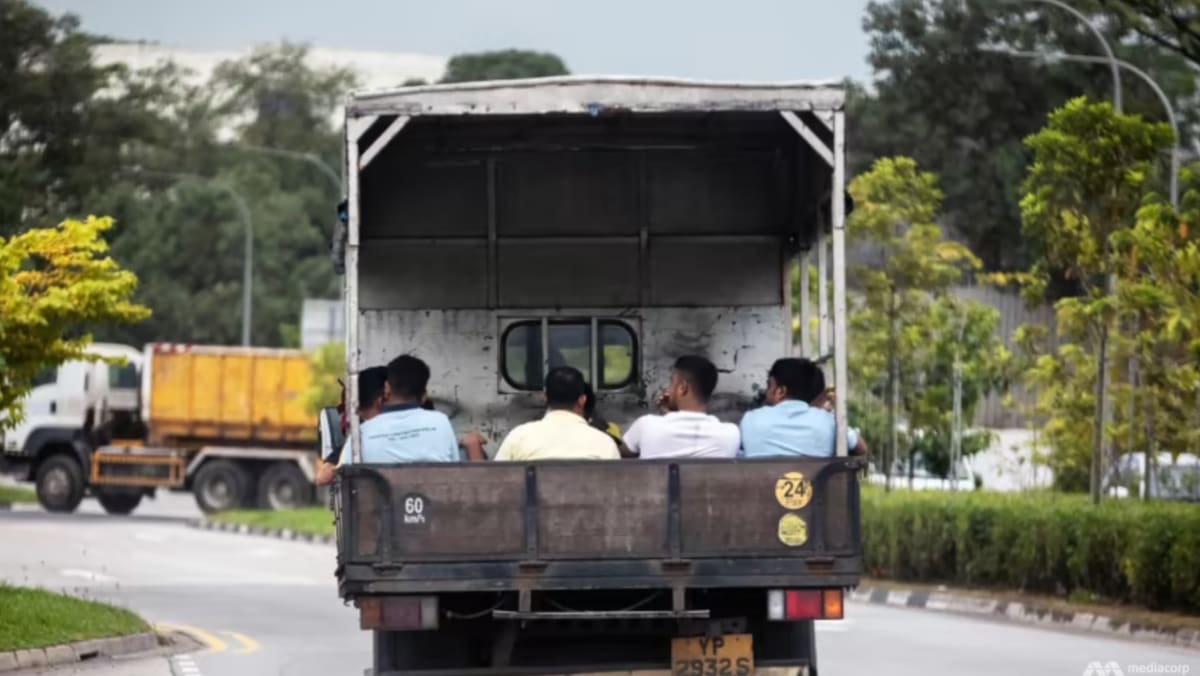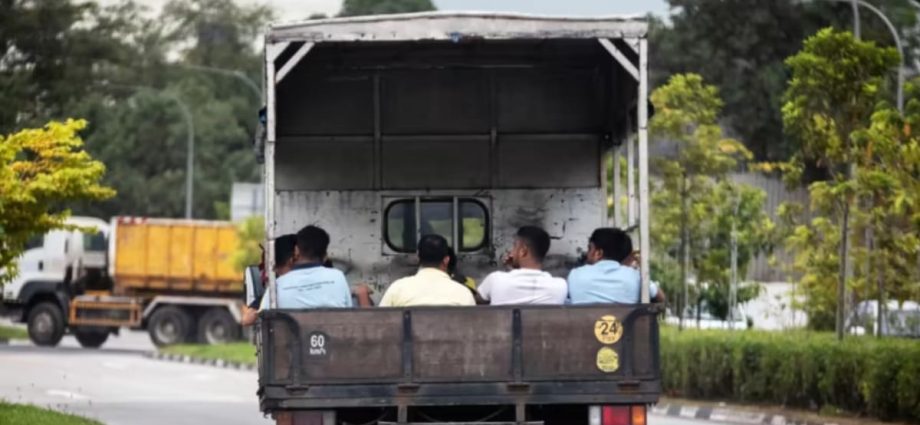
MILLION-DOLLAR BUS RIDE
The main “complexities” — costs, operational needs and infrastructural limitations – that have been highlighted by the authorities and business associations are not easy to manage, several companies told TODAY.
Mr Allan Low, deputy director for quality, environment health and safety at Teambuild Construction Group, said that his company had hired an external bus service to transport some of their workers during the pandemic in 2021, on top of maintaining its fleet of lorries.
He said the bus operator charged about S$3,500 per month for a single 40-seater bus to make two trips a day – between one dormitory and one work site.
If scaled up to ferry Teambuild’s entire workforce of about 1,000 people at that point in time exclusively by bus, the figure could have hypothetically added up to over S$1 million a year.
Mr Low added that other factors such as having different start and end destinations and needing to make multiple trips in a day, along with the rising prices of bus services since then, could push the actual figure higher today, describing the practice as “unsustainable”.
A director in a second generation family business in the construction industry with about 30 workers said that there was no incentive to plough in more money to charter buses or maintain its own fleet “because the customer always demands (the) cheaper option”.
The director, who declined for his or his company’s name to be published over concerns of bad publicity, said these costs will eventually trickle down to consumers.
“Until the day comes when people stop whining about housing prices, the industry will continue to provide cheap housing at tolerated risk levels (by engaging in lower cost practices),” he said.
OPERATIONAL-RELATED CONCERNS
Mr Sanjeev Kumar, project director at Ironhide Demolition & Construction, said that beyond cost concerns are operational considerations.
He has a relatively small team and his workers currently sit in the front cabin of the lorries, which transport equipment and materials to multiple job sites at the same time.
Mr Kumar said that it already takes a long time for the lorry, given current traffic conditions, to reach project sites.
“Imagine if every company were to split this – one is a lorry with equipment and another one is a private bus coming in – it’s going to double the traffic congestion.”
Mr Kumar added that this is “not feasible at all” unless roads are widened and traffic is somehow smoothened.
Mr Tay Hing Heng, principal consultant at demolition firm Perisseuo, had offered transport allowance for workers to make their own way to the worksite, though they would be penalised if they were late “so as to make them responsible”.
“(In the end) we gave only one guy S$100 as his transport allowance. The rest took the (lorry) transport because they didn’t want to be responsible for being late,” said Mr Tay, whose company now mainly does consultancy work.
Mr Soh of Aespada said: “Sometimes, (companies) using their own lorry means they can have a longer waiting time for their workers, compared to using buses.”
Shared buses have a stricter schedule with other trips to fulfil, he said, adding that is why some companies have reverted to using their own lorries to have autonomy over their operational scheduling.
BUS DRIVER SHORTAGES
The current shortage of drivers in the private bus sector makes the bus option even more problematic, businesses said.
“Even if bus is the only option should the government mandate the move, we are not able to find (enough) bus drivers or operators taking up the tasks of transporting these workers,” said a spokesperson for a local contractor that declined to be identified.
Agreeing, Mr Kelvin Lim, co-owner of Rae Transport services, said that while bus-driving jobs are plentiful, the main problem is getting drivers.
“Every year, there’s a batch of drivers retiring, but (practically) no new drivers come into the market to replace them,” he said.
Mr Zeph Ang, director at bus company A&S Transit, described the manpower shortage as “the worst this industry has faced so far”.
Mr Low of Teambuild said relying on external bus services permanently – especially given the current shortage – would leave his company’s daily operations exposed to uncertainties.
Industry players acknowledged that different companies have different operational requirements, which in turn impact their ability to outsource worker transportation to other parties.
Mr Aston of Alexis Construction, for example, said that he may have to reevaluate alternative transporting arrangements when his company scales up in the future, such as purchasing its own lorry for goods and chartering buses.
“Say if you have 500 workers. Maybe chartering (a bus) might be cheaper than if you own or rent a vehicle and hire a driver, right?” he said.
Meanwhile, some companies, such as maintenance ones, need to make multiple trips throughout the day across different sites – which may cost them more when chartering a vehicle compared to another company that only handles one project site at a time.

